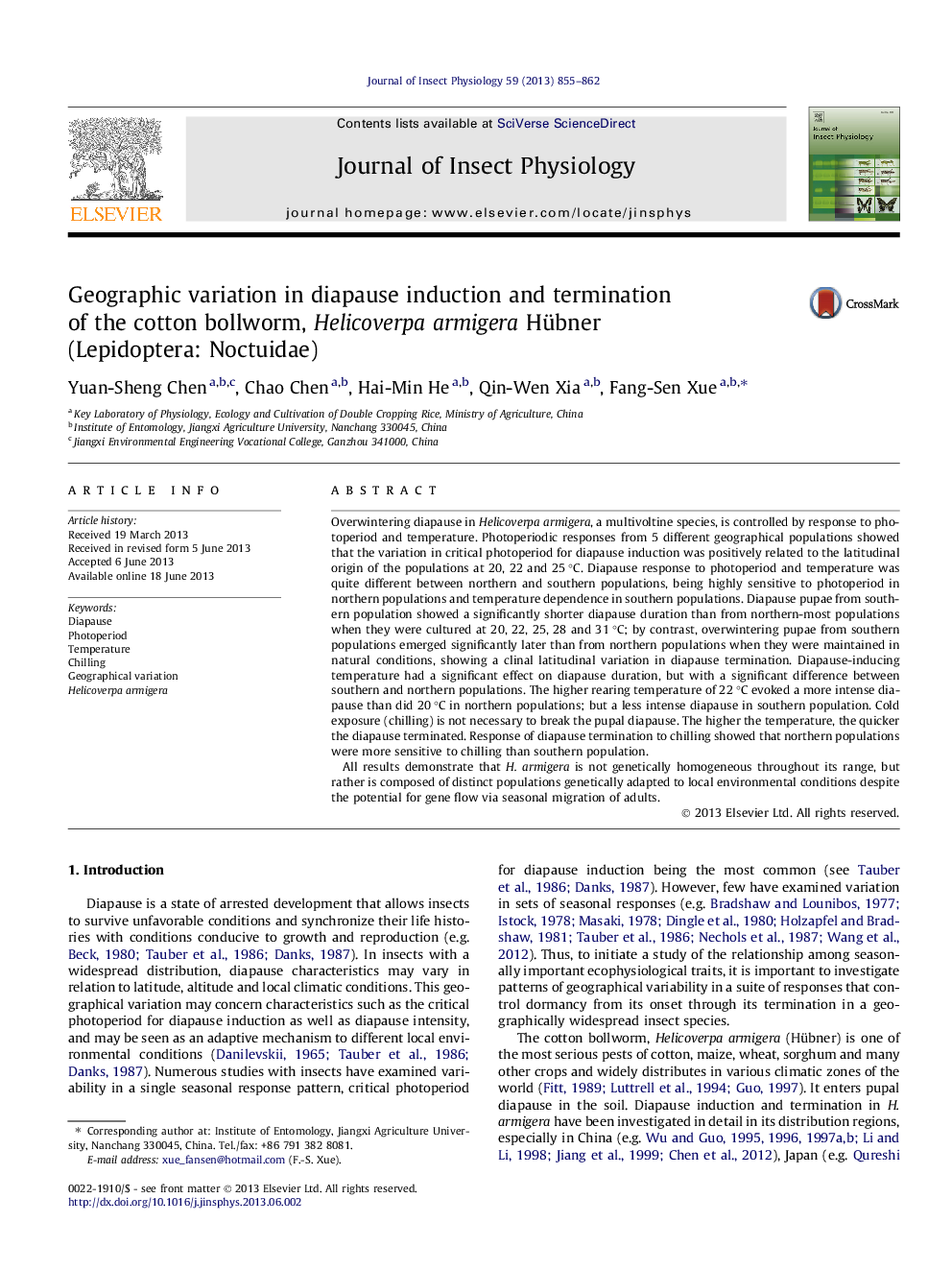| کد مقاله | کد نشریه | سال انتشار | مقاله انگلیسی | نسخه تمام متن |
|---|---|---|---|---|
| 5921763 | 1165329 | 2013 | 8 صفحه PDF | دانلود رایگان |

- The critical photoperiod for diapause induction was positively related to latitude.
- Diapause duration was longer in northern populations at high temperatures.
- Diapause duration was negatively correlated with latitude under natural conditions.
- Diapause-inducing temperature on diapause duration had a significant effect.
- Response of southern and northern populations to chilling was different.
Overwintering diapause in Helicoverpa armigera, a multivoltine species, is controlled by response to photoperiod and temperature. Photoperiodic responses from 5 different geographical populations showed that the variation in critical photoperiod for diapause induction was positively related to the latitudinal origin of the populations at 20, 22 and 25 °C. Diapause response to photoperiod and temperature was quite different between northern and southern populations, being highly sensitive to photoperiod in northern populations and temperature dependence in southern populations. Diapause pupae from southern population showed a significantly shorter diapause duration than from northern-most populations when they were cultured at 20, 22, 25, 28 and 31 °C; by contrast, overwintering pupae from southern populations emerged significantly later than from northern populations when they were maintained in natural conditions, showing a clinal latitudinal variation in diapause termination. Diapause-inducing temperature had a significant effect on diapause duration, but with a significant difference between southern and northern populations. The higher rearing temperature of 22 °C evoked a more intense diapause than did 20 °C in northern populations; but a less intense diapause in southern population. Cold exposure (chilling) is not necessary to break the pupal diapause. The higher the temperature, the quicker the diapause terminated. Response of diapause termination to chilling showed that northern populations were more sensitive to chilling than southern population.All results demonstrate that H. armigera is not genetically homogeneous throughout its range, but rather is composed of distinct populations genetically adapted to local environmental conditions despite the potential for gene flow via seasonal migration of adults.
Journal: Journal of Insect Physiology - Volume 59, Issue 9, September 2013, Pages 855-862